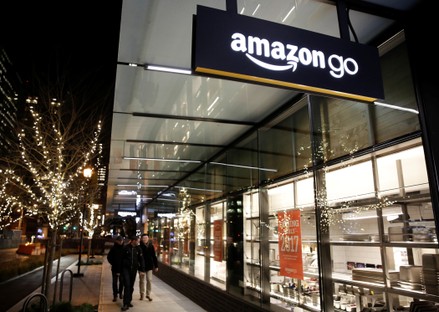Samuel Penner
Cannon Senior Editor
Amazon is a household name connecting people from around the world with nearly every kind of consumer product. Is the convenience of having low cost goods readily available at our fingertips a good thing in the long run? According to Statista, an online statistics and business intelligence portal, Amazon’s market share in 2017 for e-commerce retail was 37% and is expected to increase significantly by 2021. Projections for that same time frame predict that Amazon’s market share will be responsible for 50% of the Gross Merchandise Volume (GMV) for online sales: the dollar value of merchandise sold through a specific marketplace in a given time. In early September, it was briefly valued around one trillion dollars and has more revenue than most of the biggest tech companies, like Google and Microsoft, combined. Large retailers have often been in the business of offering in-house private label products on their shelves to compete with ‘name brand’ products, like Walmart’s George clothing or Costco’s Kirkland brand products.
Similarly, Amazon has been steadily introducing its own private labels for a wide variety of products ranging from clothes to batteries. According to a 2018 article written by Julie Creswell in The New York Times, Amazon’s batteries, priced 30% lower than competing brands, now represent about a third of the online battery market and outsell Duracell and Energizer. Batteries, however, are only the tip of the iceberg since Amazon has near a hundred private label brands on their site.
According to Creswell, the aim of Amazon in the early 90s was to democratize retail and facilitate small manufacturers in reaching the marketplace where traditionally well established brands reigned supreme. There are indications that the rapid shift toward private label brands indicates a growing bias.
Big technology, big data, and the internet of things are shaping how people shop and interact with the world. With the power of big data, companies like Amazon can identify how consumers spend and target our spending habits to great effect. Creswell reports that Amazon is using the knowledge gained through its algorithms to guide online shoppers away from competitors and toward its own products. In addition, Alexa’s voice technology is capitalizing on further bias by only providing Amazon brands in response to a product search. Combined with their ever-increasing market share, this creates a landscape where competitors must nevertheless sell their products on Amazon’s online platform to reach a wide enough consumer base.
The academic debate as to whether Amazon’s behavior is monopolistic is gaining traction in more circles thanks to an article written by Lina Khan. David Streitfeld, writing for The New York Times, described Lina Khan as reframing decades of monopoly law, where he explains how her article published in the Yale Law Journal is finding readership in Washington. Her thesis is essentially that antitrust laws have not changed to reflect the current realities of internet commerce, especially in the case of Amazon.
According to Streitfeld, Khan’s argument goes against the consensus regarding antitrust regulation, and that it should be defined based on consumer welfare. Since Amazon has historically low prices, it would not constitute a target for intervention by the federal government. Khan argues that it is the structural power that Amazon is gathering which poses a threat to a fair marketplace. Khan reasons that regulating Amazon based on its structural influence could be sensible such as treating it like a utility or telephone network, where access to its infrastructure is non-discriminatory.
Whatever the future holds for Amazon, our access to the consumer marketplace will more and more be dominated by platforms on the internet like Amazon in the same way that our consumption of information is curated by platforms like Google and Facebook. The 21st century could be defined by how we decide, as a society, to regulate the influence of big businesses and the private citizen.


